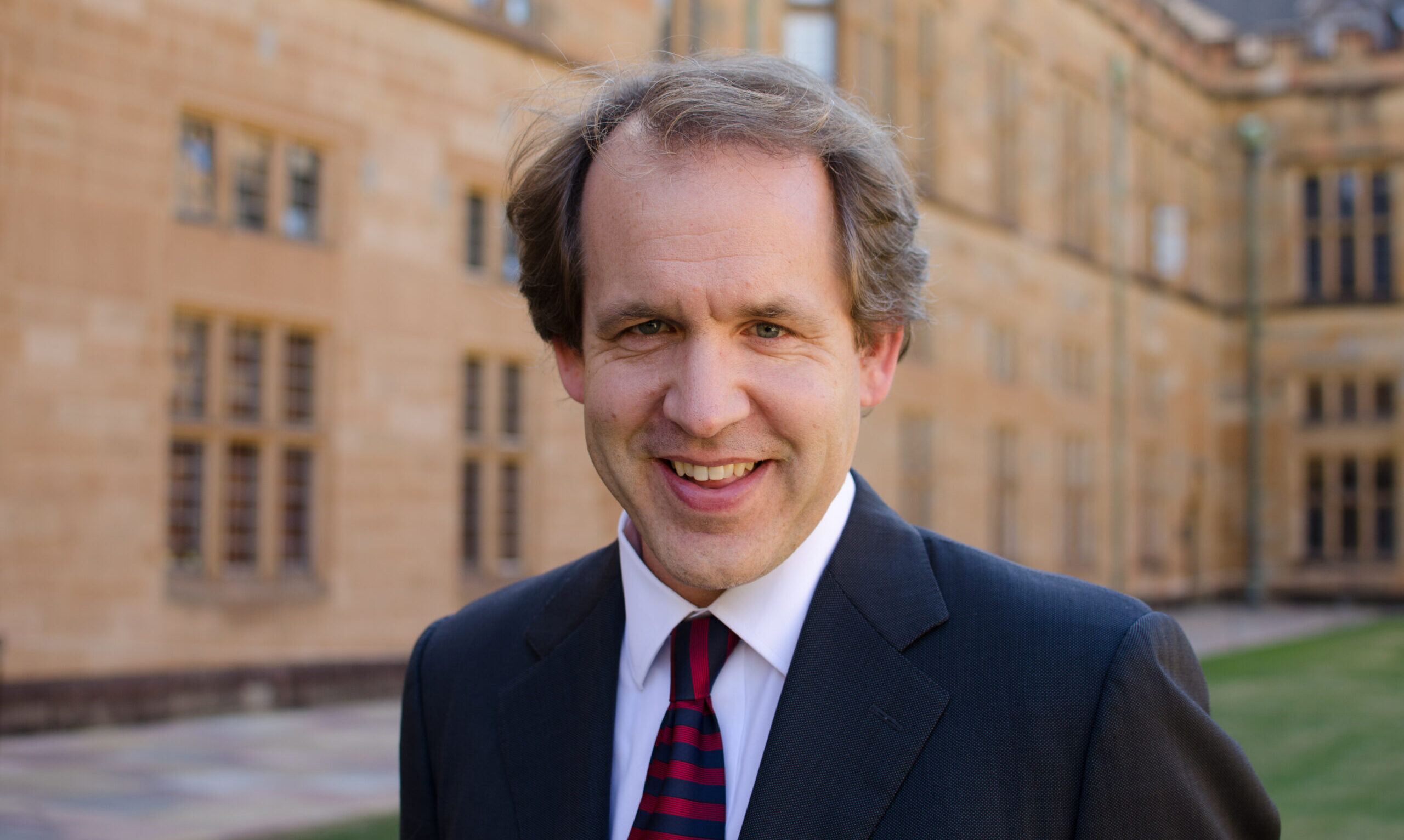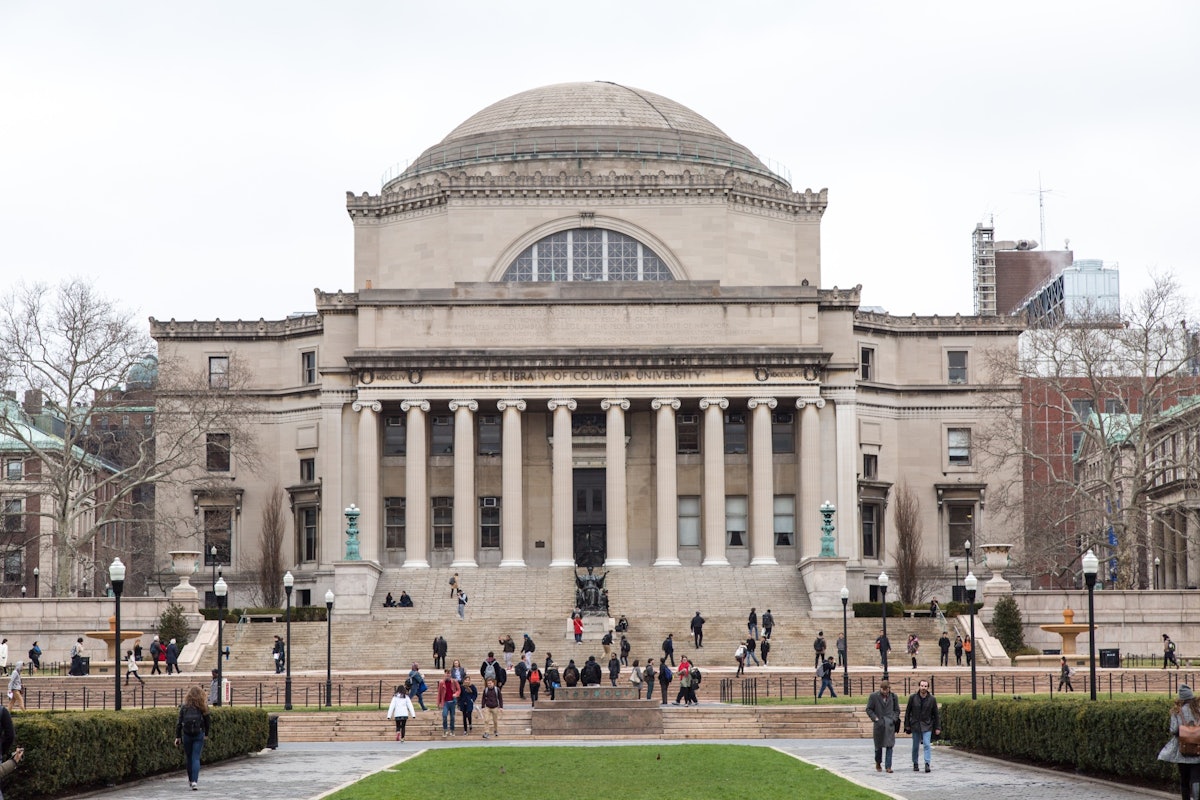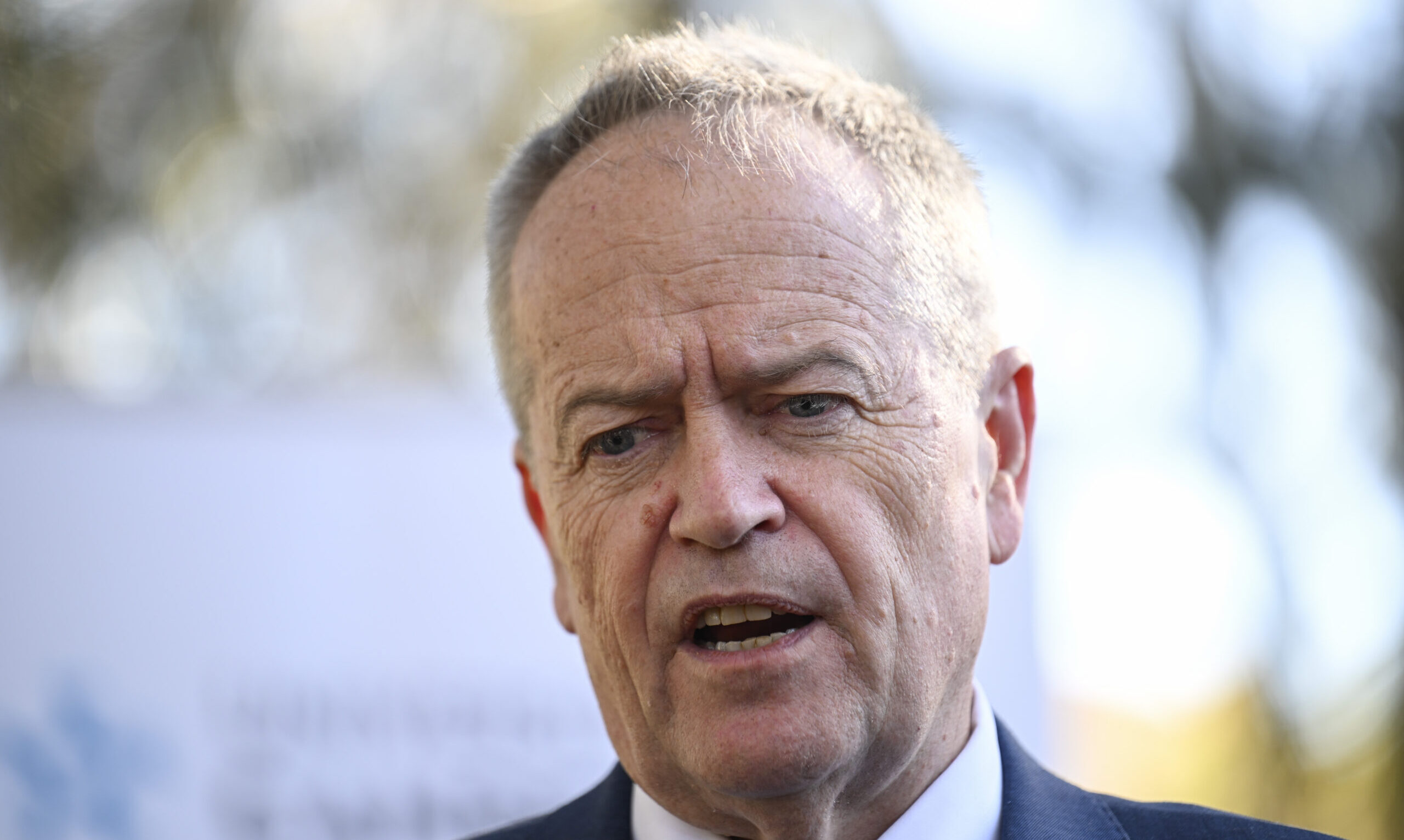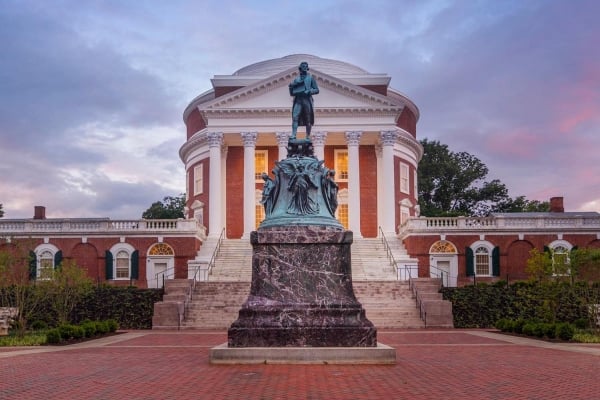Professor Duncan Ivison is vice-chancellor of the University of Manchester, the birthplace of the computer.
Please login below to view content or subscribe now.
Membership Login

Professor Duncan Ivison is vice-chancellor of the University of Manchester, the birthplace of the computer.
Please login below to view content or subscribe now.

The Government wants English universities to play a greater civic role in their localities. But new research shows universities are failing to invest in the people who perform this work, putting local relationships at risk.
A new report from the National Civic Impact Accelerator (NCIA) programme, funded by Research England to support civic universities and hosted by Sheffield Hallam University, finds that universities’ work with their communities and local partners is particularly vulnerable to the financial crisis now engulfing higher education. This is despite a strong message from education secretary Bridget Phillipson that the civic role should be one of five top priorities.
In her letter to university leaders on 4 November last year, Phillipson highlighted that universities should ‘play a full part in both civic engagement, ensuring local communities and businesses benefit fully from your work; and in regional development, working in partnership with local government and employers…’
Yet there is increasing evidence that those tasked with this work are facing a loss of resources, redundancies, and downgrading as universities focus on balancing the books. Some institutions, such as the University of Staffordshire, have disbanded their civic teams entirely; others have failed to renew employees’ short-term contracts or demanded that staff part-fund their civic roles by generating income.
Faced with this situation, we at the NCIA decided to explore further the impacts of this trend. We did so initially through an online survey and then through three focus groups in which we explored the situation in detail with 25 participants from 20 universities in England and one in Wales. The participants were all in ‘civic’ roles with responsibility for local partnerships. While some held academic posts, most were in management or professional services positions. The discussions were held under the Chatham House Rule to encourage participants to speak freely.
“There has been constant restructuring… it is expensive to lose all that valued knowledge.”
We identified four key risks to universities’ civic activities and relationships. Taken together, these pose a serious threat to universities’ status as ‘anchor institutions’ in their localities.
The first risk is that universities lose focus as they concentrate on their financial survival, generating uncertainty among local stakeholders about their reliability as partners. The second is a loss of institutional memory: as staff leave or are moved to other roles, relationships are abandoned and need to be rebuilt.
This risk was summed up by one participant in the discussions: ‘…because of the constant restructuring which seems to be repetitive over so many years … there’s not that continuation of learning, and all the knowledge and those relationships and that richness of what we do feels like it’s been lost… It’s expensive to lose all that valued knowledge.’
The third risk is a loss of credibility: partners in local government, healthcare or business see a growing gap between universities’ rhetoric about their civic role and their reduction of investment in relationships, or the junior status of the staff assigned to civic activities. This leads to a fourth risk, which is a loss of relevance, reinforcing the populist notion that higher education has little to contribute to issues that matter to local people.
As one participant commented: ‘If you’re sitting in rooms with leaders of councils and hospitals, for that to be a junior role is a big ask, especially if it’s a junior role on a temporary contract.’
From the discussions we identified five ‘civic capitals’ that now need to be rebuilt. These are economic (direct investment in local communities); social (relationships and networks); cultural (institutional support and resources); symbolic (leadership and ‘buy-in’ by senior staff); and emotional (the personal commitment and passion of those who do the work).
We make five policy recommendations for university leaders based on our findings, and three for national government.
University leaders should:
Government policymakers should:
We recognise that universities and government both face challenging times and multiple financial and political pressures. Yet if universities are to play a long-term civic role in their communities, and if government wants higher education to support its ambitions to tackle local inequalities, then sustained investment in civic work is a prerequisite.

From the Bolton Chronicle, 7 June 1845:
[t]he following is the Report of the progress and state of this Institution made to Government, and just submitted to Parliament – The School of Design at Somerset-house was established at the commencement of the year 1837, by and under the superintendence of the Board of Trade, for the improvement of ornamental art, with regard especially to the staple manufactures of this country. The number of applicants for admission every month exceeds, by about fifty, that which the limited space in Somerset-house will accommodate.
In connection with the head school at Somerset-house, schools have been formed in many of the principal manufacturing districts, namely, in Spitalfields, Coventry, Birmingham, Manchester, Sheffield, Nottingham, York, Newcastle and Glasgow; and applications are at present under consideration for the establishment of others in the boroughs of Southward and Lambeth, in Norwich, in the Staffordshire Potteries, and in Dublin…
And it is to Norwich that we go.
The idea of a school of design had been floated in Norwich for some time. The chief magistrate, Henry Bellenden Ker, had written to the mayor in November 1841 – the letter was published with an editorial in the Norwich Mercury on 6 November – setting out the expectations on the town, were it to be granted a government school of design. Essentially, they would have to find about £150 per year, supplemented by the government funding for the salary of the head of the school.
The Norwich Mercury was very much in favour:
In 1842 the town council agreed to a grant of £75 towards the costs, the remainder to be made via subscriptions. And it seems that the subscriptions must have been forthcoming, for on 21 January 1846 the Norwich School of Design was formally opened with much hoo-ha and admiring of the artistic collections that it had. In addition to the pieces granted by the government, the council provided some works from its own collection. And the school was up and running!
By 1880 it was known as the Schools of Art and Science. It seems that this was by central government action: the schools of design were originally creations of the Board of Trade, and the Victorians recognised that science was just as important as creativity in that regard. (Even if this truth is one that our governments have forgotten today.)
In 1899 the Technical Instruction Act empowered local authorities to control and fund technical education, and by the following year suggestions were being made that the School of Art and Sciences might fall within the scope of this act. Certainly the council was active in this area, a technical education committee having been established and an organiser and inspector of technical education appointed. By 1891 a new technical institute was being built in Norwich – the one shown on the card. The School of Art and Design was incorporated into this new Institute from 1901, as was, in 1913, the Norfolk and Norwich School of Cookery.
The technical institute became the Norwich Technical College in 1930, and then in 1938 the Technical College and School of Art, Norwich. It feels almost like the artists and designers were not entirely integrated into the college!
And in 1964 there was a separation. The college by then had a new building, and it seems that the technical subjects went to this new building on the Ipswich Road (still used by City College Norwich to this day), while the renamed Norwich School of Art stayed put. This also led to the School of Art moving into degree level education: from 1965 it offered the Diploma in Art and Design, validated by the National Council for Diplomas in Art and Design. And when in 1975 the National Council for Diplomas in Art and Design was incorporated into the Council for National Academic Awards, the school started offering bachelor’s degree courses.
In 1974 responsibility for the School of Art had shifted from Norwich City Council to Norfolk County Council. And this fact became significant in 1989 when the School was merged with the Great Yarmouth College of Art, and the Norfolk Institute of Art and Design (NIAD) was created. This became an associate college of Anglia Polytechnic University (APU, as it then was), with APU validating NIAD’s degrees. These included postgraduate taught degrees from 1993, and research students from 1995.
In 1994 the institute was incorporated as a higher education corporation – this is the legal form for most universities created from 1992 onwards – and renamed as the Norwich School of Art and Design. In 2007 it gained taught degree awarding powers and again assumed a new name, this time as the Norwich University College of the Arts. And finally in 2013, after the size threshold for university status had been reduced from 4,000 students to 1,000, it gained university status, becoming the Norwich University of the Arts.
Alumni of the university include Keith Chapman, who created both Bob the Builder and Paw Patrol; and Neil Innes, of the Bonzo Dog Doo-Dah Band and Monty Python.
The card itself is unsent, but looks to me to date from the first decade of the twentieth century. There’s a jigsaw here, for your delight and delectation.

Many university leaders are uneasy about the idea of personal branding. It can feel self-promotional, even uncomfortable – and it’s often a concept that jars with their personal values, the culture of their institution, and indeed their perception of how higher education itself operates.
However, personal branding should not be about ego or marketing. It’s about clarity, authenticity, and trust. In an environment where leadership visibility, credibility, and alignment with institutional values are increasingly scrutinised, shaping how you’re understood by others isn’t merely helpful, it’s essential.
So, while we’re a bit uncomfortable with the term, personal brand, we think it’s extremely important for aspiring university leaders to think about how they go about developing one for themselves.
It’s perhaps worth reflecting on what Jeff Bezos has said in this context because it’s helpful:
“Your brand is what other people say about you when you’re not in the room.”
Your title and role may open doors, but it’s your values, your expertise and your contribution that leave a lasting impression. Personal brand is the space you occupy in other people’s minds: your colleagues, students, and external connections. In today’s digital world, you are visible in search results, social feeds, LinkedIn and other platforms. If you’re not actively shaping your own narrative, others will do it for you – forming opinions and perceptions that may not be accurate or aligned with your values.
Thinking about your personal branding allows you to control the narrative. Essentially, if you don’t shape your story, someone else will. It allows you to build trust and credibility authentically. This is vital, we all know that a consistent, values-led brand is consonant with reliability in times of change. Where there is so much information out there, it can be a strong signal among confusion and noise. It also gives you a better handle on future-proofing your career.
Executive search companies, partnerships, board appointments all begin with discovery, and if you can’t be found, you can’t be considered. Distilling your experience and expertise beyond the role you’re in now makes moves to other roles easier. People do their homework on you, they want to know what kind of person you are, not necessarily the nitty gritty detail (although bad social media lingers) but to know that you are real. And it’s not always about a positive career trajectory to the next job. In these times your role might be at risk, and you might need to consider your next position, even beyond your current role, institution and sector.
This is about developing a personal mark, but it’s worth noting that an authentic personal brand also benefits your institution. Visible leaders attract talent and partnerships, and can draw top academics, high-calibre students, and external funders. People will engage because of what you stand for in terms of your values and your impact. And got right, it will help your students, staff, external connections and the public to be more confident about your vision and your decisions.
Equally important, a clear and visible personal brand enables you to communicate more effectively – an essential skill for building strong teams, driving change, and leading through crisis. You are future-proofing yourself, becoming a trusted authority, so that you are known for more than just your job title and credentials.
It starts with how you present yourself in meetings, working groups, committees, stakeholder meetings, even corridor conversations and incidental interactions.
To be able to develop your personal brand, you need to ask yourself several questions and answer them honestly. And bear in mind that ‘showing up’ is not showing off, you can’t make a difference if you’re invisible!
Truly understand what your goals are: who you are trying to help, and what positive difference do you want to make? Understanding your reason for doing what you do makes being visible that much easier.
Ask yourself these questions in the context of what you want to change or influence, such as Leadership & Change Management; Equity, Diversity & Social Mobility; Research Impact & Knowledge Exchange; Student Experience & Wellbeing; The Future of Work & Skills. These should, of course, be significant topics that reflect what you want to be known for and the people or communities you aim to support.
Before you can become an authority on your topic, you need to have a proven track record of success in that area. Your credibility is built not just on what you say, but on what you’ve delivered; your demonstrable achievements and real impact that others can recognise and rely on. Without this foundation, personal branding risks sounding empty or a promissory note rather than coming from a position of authority and authenticity.
When you are speaking to others about what you are doing, it is helpful to reflect on how you should structure what you say. Make sure, for example, that you’re clear about defining the issue: speak directly to the challenges your audience faces (e.g. navigating grant applications, improving departmental culture); position the challenges. Share frameworks, tips, or toolkits you’ve developed, and humanise your advice – weave in a short anecdote or lesson learned, for example.
Do these things in the context of people you might be able to support by being more visible: students and research students, people more junior, and those wanting to get into HE, particularly those from minoritised backgrounds. Essentially, leadership isn’t just about climbing, your role should be to hold the ladder down for others.
To help you maximise your impact – here are some ideas:
1. Digital Footprint Audit
2. Think about Content, Calendar & Cadence
3. Collect Metrics & Evaluation
4. Network Activation
And avoid:
Professor Shân Wareing, Vice-Chancellor and CEO, Middlesex University
People are always going to draw conclusions from what they see you do, so you always need to be aware of that. I don’t use personal brand with the goal of ‘selling’ me. However, I do want to consistently communicate important and specific aspects of how I work – such as that I care about other people’s growth – and I try to align all my social media and other communications with that message.”
Professor Simon Biggs Vice Chancellor and President, James Cooke University
Senior leaders represent their organisation externally. A strong personal brand helps amplify and align their values with the organisation in public forums, industry discussions, and policy advocacy. Personal branding signals what a leader stands for ethically, strategically, and culturally. It helps align teams and attract talent who resonate with that leadership style.
Professor Theo Farrell, Vice-Chancellor, Latrobe University, Australia
I think aspiring leaders need to think carefully about the kind of leader they want to be – and this will involve reflecting on their own values, the ambitions they have for the organisation or unit they lead, and their aspiring leadership journey. For me, personal brand is simply the outward expression of this leadership ethos and style. It is expressed in communications, including social media, and also in every interaction with people inside and outside the organisation. Being consistent with your personal brand, in everything you do is important for authentic leadership. In terms of social media, the goal is to communicate your values. Being consistent is obviously important. At the same time, my experience is one of posting fewer personal reflections and more corporate content as I have become more senior, and in these senior roles increasingly represent my organisation.
Leadership and personal branding are inseparable in today’s higher education landscape. Your brand is not a luxury. It’s your strategic asset made up of your values, your story, your impact on others and ultimately your legacy.

The preliminary settlement, filed last Monday in Manhattan federal court and pending judicial approval, resolves claims that Columbia misrepresented key data points to enhance its standing in the influential annual rankings. The university reached as high as No. 2 in the undergraduate rankings in 2022 before the alleged misconduct came to light.
Students alleged that Columbia consistently provided inaccurate data to U.S. News, including the false claim that 83% of its classes contained fewer than 20 students. The lawsuit argued these misrepresentations were designed to improve the university’s ranking position and, consequently, attract more students willing to pay premium tuition rates.
The settlement covers approximately 22,000 undergraduate students who attended Columbia College, the Fu Foundation School of Engineering and Applied Science, and the School of General Studies between fall 2016 and spring 2022.
The controversy began in July 2022 when Columbia mathematics professor Dr. Michael Thaddeus published a detailed analysis questioning the accuracy of data underlying the university’s No. 2 ranking. His report alleged that much of the information Columbia provided to U.S. News was either inaccurate or misleading.
Following the publication of Thaddeus’s findings, Columbia’s ranking plummeted to No. 18 in September 2022. The dramatic drop highlighted the significant impact that data accuracy has on institutional rankings and reputation.
In response to the allegations, Columbia announced in June 2023 that its undergraduate programs would withdraw from participating in U.S. News rankings altogether. The university cited concerns about the “outsized influence” these rankings have on prospective students’ decision-making processes.
“Much is lost when we attempt to distill the quality and nuance of an education from a series of data points,” Columbia stated in explaining its decision to withdraw from the rankings process.
While denying wrongdoing in the settlement agreement, Columbia acknowledged past deficiencies in its reporting practices. The university stated it “deeply regrets deficiencies in prior reporting” and has implemented new measures to ensure data accuracy.
Columbia now provides prospective students with information that has been reviewed by an independent advisory firm, demonstrating the institution’s commitment to transparency and accurate representation of its educational offerings.
Columbia’s decision to withdraw from U.S. News rankings reflects a growing skepticism among elite institutions about the value and impact of college ranking systems. Harvard and Yale have also stopped submitting data to U.S. News for various programs, signaling a potential shift in how prestigious universities approach rankings participation.
Under the terms of the agreement, student attorneys plan to seek up to one-third of the settlement amount for legal fees, which would leave approximately $6 million available for distribution among affected students. The settlement requires approval from a federal judge before taking effect.
Student lawyers characterized the accord as “fair, reasonable and adequate” given the circumstances of the case and the challenges inherent in proving damages from ranking manipulation.

In an April 21 article entitled “We Haven’t Seen a Fight Like Harvard vs. Trump in Centuries,” Steven Brint wrote that the ongoing dispute between Harvard University and the federal government is “the most important showdown between state power and college autonomy since 1816, when the New Hampshire Legislature attempted to convert Dartmouth College into a public entity.”
While the Dartmouth College case, which the U.S. Supreme Court decided in 1819 in Dartmouth’s favor, looms large in American history, universities have, prior to and since that decision, regularly fought for their rights—their corporate rights.
Today, we call this institutional academic freedom. But, as Richard Hofstadter wrote in his portion of The Development of Academic Freedom in the United States (1955), co-authored with Walter Metzger, “academic freedom is a modern term for an ancient idea.” That ancient idea holds that university freedom is based on corporate rights, which is why Hofstadter begins with a section subtitled “Corporate Power in the Middle Ages.” Recovering that old idea could not be more important today.
It is no exaggeration to say that, in spring 2025, we may have entered the nadir of American academic freedom. Austin Sarat rightfully urged us, even before then, to find new ways to guard academic freedom “against external threats.” Now, in the face of ongoing hostility from both state and federal governments, it is imperative that universities deploy the full range of arguments at their disposal, including those based on their forgotten corporate rights. In other words, it’s time for universities to invoke their corporate rights. Allow me to explain.
Corporateness is the university’s hidden superpower. While every university is constituted differently, they are all corporations, regardless of whether they present themselves as public or private. That is because “corporation” is a general legal term denoting a unity at law.
“Incorporation,” David Ciepley has written, “is a powerful tool.” Corporations can sue and be sued in their own names, hold property, enter contracts, use their own seals and legislate. Importantly, the university’s corporateness bears no necessary relationship to its current autocratic constitution, whereby, according to Timothy V. Kaufman-Osborn, universities are “ruled by external lay governing boards vested with the panoply of powers customarily granted to corporations, including the power to adopt, amend, and revoke its basic rules of institutional governance.” Thus, we can use the university’s corporateness to rebuff external attacks, while also working, as Arjun Appadurai wrote recently, “to break the unilateral power of boards of trustees.”
The university’s cherished autonomy springs from its corporate rights. In the U.S., these rights were first articulated in a now-forgotten line of cases starting with the 1805 North Carolina Supreme Court case Trustees of University of North Carolina v. Foy, a decision issued more than a century before the American Association of University Professors’ famous 1915 Declaration of Principles on Academic Freedom and Academic Tenure—and the U.S. Supreme Court’s 1957 discovery of a theretofore unknown academic freedom right in the First Amendment to the U.S. Constitution.
Like Dartmouth College, these cases were about corporate rights. But, unlike Dartmouth College, they concerned universities we now consider public; they were decided by state supreme courts, rather than by the U.S. Supreme Court; and, when they implicated constitutional rights, they implicated rights protected by state constitutions, rather than by the federal one.
What I call the corporate theory of academic freedom explains why the rights that originally protected the American scholarly enterprise, including in the Dartmouth College case, were corporate rights by emphasizing that universities are, by law, corporations. (It’s actually in the name itself: “university,” derived from the Latin universitas, simply means “corporation.”)
Rather than an individual right, academic freedom is, properly understood, what Stanley Fish called “a guild concept.” More specifically, it is a concept belonging to the incorporated guild of professors and students (and others). This theory bases academic freedom not on freedom of speech—a troublesome basis for academic freedom—but on the university’s corporate rights. These corporate rights, not infrequently finding expression in constitutions, are also sometimes constitutional rights. By substituting corporate rights for freedom of speech, we turn a foundation of sand into stone.
It might prove difficult for some in the university to embrace a term they associate only with business corporations, but corporate rights have been, and still can be, used to protect universities. In this connection, it might help to recall the many corporations that are not business corporations, including municipal corporations, nonprofit corporations (often euphemized as “organizations”), church corporations and university corporations.
At a moment when the U.S. Supreme Court seems keen on granting corporate rights to business corporations, one might wonder why business corporations should get all the rights. With state and federal governments increasingly targeting universities, we simply cannot afford to leave these arguments on the table. Understanding and utilizing these neglected corporate rights cases requires shifting our focus, on the one hand, from private to public universities, and, on the other hand, from federal to state courts (where Dartmouth College began).
While the federal government’s recent attacks on Columbia and Harvard have captured headlines across the country, state legislatures continue to menace public universities. Although these universities have, through centuries of experience, become highly familiar with governmental intrusion, they have become less adept at repulsing it than they once were. As a result, one recent article in The Chronicle of Higher Education could observe that “it’s well understood that public colleges are in the thrall of their state lawmakers.” The corporate theory of academic freedom challenges this understanding.
Consider two post–Dartmouth College cases about universities we call public today. The first is an 1887 Indiana Supreme Court case about Indiana University. The second is an 1896 Michigan Supreme Court case about the University of Michigan. Each case furnishes ideas about how to address academic freedom’s most vexing and persistent challenge: protecting public universities from state legislatures.
In an 1887 case called Robinson v. Carr, the Indiana Supreme Court considered what interest rate applied to a fund established by the Indiana Legislature for Indiana University. The statute that established the university fund indicated that any loan made from the university fund would carry a 7 percent interest rate. The trustees of Indiana University, who were established as a “body politic” by the Indiana Legislature, could then use the interest to cover annual university expenses. But a later statute repealed laws concerning certain funds, including “public funds,” and applied an 8 percent interest rate instead. The question as to which interest rate applied therefore turned on whether the university fund was a “public fund.” If it was a public fund, an 8 percent rate would apply; if it was not, the 7 percent rate would remain.
The Indiana Supreme Court concluded that the university fund was not a public fund because “the university, although established by public law, and endowed and supported by the state, is not a public corporation, in a technical sense.” The court meant by this that the Board of Trustees “has none of the essential characteristics of a public corporation.” The university was “not a municipal corporation,” and “its members are not officers of the government, or subject to the control of the legislature in the management of its affairs.”
The court reasoned, “That the university was established under the direct authority of the state, through a special act of the legislature, or that the charter contains provisions of a purely public character, nor yet that the institution was wisely established, and is and should be perpetually maintained at the public expense, for the public good, does not make it a public corporation, or constitute its endowment fund a public fund.” In the final analysis, “the legal status of the state university being that of a technically private, or at most a quasi public, corporation, the university fund, of which it is the sole beneficiary, is therefore not a public fund, within the meaning of the law.” In short, the court’s careful analysis under the corporate framework led it to conclude that the university’s legislative establishment and public funding did not make it public.
Less than a decade after Robinson, the Michigan Supreme Court decided a case called Regents of the University of Michigan v. Sterling. There, the court had to decide whether the Michigan Legislature could require the University of Michigan Board of Regents to relocate its homeopathic medical college from Ann Arbor to Detroit. The Michigan regents had refused to comply with the Legislature’s relocation law, and Charles Sterling, a private citizen, then asked the Michigan Supreme Court to order the Regents to comply.
The court denied Sterling’s request, noting that, “under the [Michigan] constitution of 1835, the legislature had the entire control and management of the university and the university fund. They could appoint regents and professors, and establish departments.” But, after the university languished under this governance model, the people of Michigan withdrew the power of the Legislature to control the university. To that end, the 1850 Michigan Constitution ordained that “the board of regents shall have the general supervision of the university, and the direction and control of all expenditures from the university interest fund.”
The court offered three “reasons to show that the legislature has no control over the university or the board of regents.” First, both entities “derive their power from the same supreme authority, namely, the constitution,” and, “in so far as the powers of each are defined by that instrument, limitations are imposed, and a direct power conferred upon one necessarily excludes its existence in the other, in the absence of language showing the contrary intent.”
Second, the Board of Regents “is the only corporation provided for in the constitution whose powers are defined therein”—whereas “in every other corporation provided for in the constitution it is expressly provided that its powers shall be such as the legislature shall give.” Third, “in every case except that of the regents the constitution carefully and expressly reposes in the legislature the power to legislate and to control and define the duties of those corporations and officers.”
Because the constitution entrusted “the general supervision” of the university to the regents, “no other conclusion … is possible than that the intention was to place this institution in the direct and exclusive control of the people themselves, through a constitutional body elected by them.” The people of Michigan had entrusted the university’s governance to the regents directly, thereby removing the university from the Legislature’s purview. As a result, the Legislature could no longer govern the university.
These 19th-century cases, together with many other state cases like them, contain resources that universities can use to meet today’s extraordinary challenges. (Edwin D. Duryea lists many, but not all, of these cases in the first appendix to his 2000 monograph, The Academic Corporation: A History of College and University Governing Boards.) Indeed, the cases remain relevant today. The Montana Supreme Court’s 2022 decision affirming the Montana regents’ “exclusive authority to regulate firearms on college campuses” borrowed, with slight alterations and no attribution, one of the aforementioned passages from Sterling.
Harvard’s battle with the federal government is truly momentous, but it is one of many that American universities—public and private—have consistently waged for centuries. When these universities rose up to defend their corporate rights, state supreme courts across the country often affirmed those rights. The time has come to assert those rights once again. As state governments, along with the federal government, apply new and in some ways unprecedented pressure, universities can no longer ignore their powerful claims to corporate rights. Continuing to do so may incur costs none of us are willing to pay.

University rankings have long been a trusted, if controversial, proxy for quality. Students use them to decide where to study. Policymakers use them to shape funding. Universities use them to benchmark themselves against competitors. But in an AI-powered world, are these rankings still measuring what matters?
If we’ve learned anything from the world of business over the last decade, it’s this: measuring the wrong things can lead even the most successful organisations astray. The tech industry, in particular, has seen numerous examples of companies optimising for vanity metrics (likes, downloads, growth at all costs) only to realise too late that these metrics didn’t align with real value creation.
The metrics we choose to measure today will shape the universities we get tomorrow.
Current university ranking systems, whether national or global, tend to rely on a familiar set of indicators:
While these factors offer a snapshot of institutional performance, they often fail to reflect the complex reality of the world. A university may rise in the rankings even as it fails to respond to student needs, workforce realities, or societal challenges.
For example, graduate salary data may tell us something about economic outcomes, but very little about the long-term adaptability or purpose-driven success of those graduates or their impact on improving society. Research citations measure academic influence, but not whether the research is solving real-world problems. Reputation surveys tend to reward legacy and visibility, not innovation or inclusivity.
In short, they anchor universities to a model optimised for the industrial era, not the intelligence era.
Artificial Intelligence is a paradigm shift that is changing what we value in all aspects of life including education, especially higher education, how we define learning, what we want as an outcome, and how we measure success.
In a world where knowledge is increasingly accessible, and where intelligent systems can generate information, summarise research, and tutor students, the role of a university shifts from delivering knowledge or developing skills to curating learning experiences focusing on developing humans’ adaptability, and preparing students, and society, for uncertainty.
This means the university of the future must focus less on scale, tradition, and prestige, and more on relevance, adaptability, and ethical leadership. These are harder to measure, but far more important.
This demands a new value system. And with that, a new approach to how we assess institutional success.
As we rethink what universities are for, we must also rethink how we assess their impact. Inspired by the “measure what matters” philosophy from business strategy, we need new metrics that reflect AI-era priorities. These could include:
1. Adaptability: How quickly and responsibly does an institution respond to societal, technological, and labour market shifts? This could be measured by:
2. Student agency: Are students empowered to shape their own learning paths, engage with interdisciplinary challenges, and co-create knowledge? This could be measured by:
3. AI and digital literacy: To what extent are institutions preparing their staff and their graduates for a world where AI is embedded in every profession? This could be measured by:
4. Contribution to local and global challenges: Are research efforts aligned with pressing societal needs amplified with advancements of AI such as social justice, or the AI divide? This could be measured by:
5. Wellbeing and belonging: How well are staff and students supported to thrive, not just perform, within the institution? This could be measured by:
These are not soft metrics. They are foundational indicators of whether a university is truly fit for purpose in a volatile and AI-transformed world. You could call this a “University Fitness for Future Index”, a system that doesn’t rank but reveals how well an institution is evolving, and as a result its academics, staff and students are adapting to a rapidly changing world.
Universities must now face the uncomfortable but necessary task of redefining their identity and purpose. Those who focus solely on preserving status will struggle. Those who embrace the opportunity to lead with substance – authenticity, impact, innovation – have a chance to thrive.
AI will not wait for the sector to catch up. Students, staff, employers, and communities are already asking deeper questions: Does this university prepare me for an unpredictable future? Does it care about the society I will enter after graduation? Is it equipping us to lead with courage and ethics in an AI-powered world?
These are the questions that matter. And increasingly, they should be the ones that will shape how institutions are evaluated, regardless of their position in the league tables.
It’s time we evolve our frameworks to reflect what really counts, that increasingly will be defined by usefulness, purpose, and trust.
We are not simply in an era of change. We are in a change of era.
If we are serious about preparing our learners, and our society, for a world defined by intelligent systems, we must also be serious about redesigning the system that educates them.
That means shifting from prestige to purpose. From competition to contribution. From reputation to relevance.
Because the institutions that will lead the future are not necessarily those that top today’s rankings.
They are the ones willing to ask: what truly matters now and are we brave enough to measure it?

The University of Canberra (UC) posted a $41 million operating deficit for 2024 on Friday after cutting 170 full-time equivalent positions last year.
Please login below to view content or subscribe now.

This is a developing story and will be updated.
The University of Virginia president James Ryan said Friday he was resigning after the Justice Department demanded he step down.
“To make a long story short, I am inclined to fight for what I believe in, and I believe deeply in this university,” Ryan wrote in a letter to the campus community. “But I cannot make a unilateral decision to fight the federal government in order to save my own job. To do so would not only be quixotic but appear selfish and self-centered to the hundreds of employees who would lose their jobs, the researchers who would lose their funding, and the hundreds of students who could lose financial aid or have their visas withheld.”
The Justice Department has for months been quietly investigating whether the Virginia flagship complied with President Donald Trump’s order banning diversity, equity and inclusion programs. The university’s Board of Visitors voted to dissolve its DEI office in March, but multiple conservative alumni groups and legal entities complained that Ryan failed to eliminate DEI from all corners of campus. In many cases, critics argue that the university simply changed the names of programs but maintained their core function.
The New York Times first reported on the resignation and the Justice Department’s demand Thursday evening.
Ryan wrote that he had planned to step down next spring for reasons separate from the investigation; he didn’t say when his resignation would take effect.
“While there are very important principles at play here, I would at a very practical level be fighting to keep my job for one more year while knowingly and willingly sacrificing others in this community,” he wrote.
Ryan took over at UVA in August 2018, steering the institution through the aftermath of the deadly white supremacist rally in August 2017, the pandemic and the racial reckoning in 2020. He also cracked down on pro-Palestinian protesters last spring—a move that Republicans in the state backed but students and faculty condemned. Ryan also embraced institutional neutrality and sought to make UVA a leader in the study of democracy.
Assistant Attorney General Harmeet Dhillon said in a statement Friday that the Justice Department welcomes “leadership changes in higher education that signal institutional commitment to our nation’s venerable federal civil rights laws.”
DOJ hasn’t said publicly what laws UVA allegedly violated, though Dhillon’s statement noted that the agency “has a zero-tolerance policy toward illegal discrimination in publicly-funded universities.”
From the early days of his second term, Trump has made a point of dragging elite, largely Ivy League institutions like Columbia and Harvard Universities into the national spotlight and berating them for their supposed liberal ideologies and alleged antisemitism. But this investigation of UVA, a public institution in a state led by a Republican, represents a new front in the administration’s war against higher education—and so far Trump is succeeding.
Brendan Cantwell, a higher education professor at Michigan State University, said Ryan’s resignation is a “major blow” to the independence of American institutions.
“It is a sign that major public research universities are substantially controlled by a political party whose primary goal is to further its partisan agenda and will stop at nothing to bring the independence of higher education to heel,” he told Inside Higher Ed. “It undercuts both the integrity of academic communities as self-governing based on the judgment of expert professionals and the traditional accountability that public universities have to their states via formal and established governance mechanisms.”
Legal experts who spoke with the Times struggled to recall other instances when the federal government has demanded a university board fire the chief official, saying it has only been done in the past when concerning corporate criminal cases.
Robert Kelchen, an education policy professor at the University of Tennessee, noted that Ryan’s resignation portends a future in which all public university presidents must conform to the political views of their state’s leadership or be kicked out of office.
“Trump pushing James Ryan to resign at UVA is important, but it happened in part because VA’s governor is also Republican,” Kelchen wrote on BlueSky.
Virginia’s two senators, who are both Democrats, said in a joint statement that the demand for Ryan to resign “is a mistake that hurts Virginia’s future.”
“It is outrageous that officials in the Trump Department of Justice demanded the Commonwealth’s globally recognized university remove President Ryan—a strong leader who has served UVA honorably and moved the university forward—over ridiculous ‘culture war’ traps,” said Sens. Tim Kaine and Mark Warner. “Decisions about UVA’s leadership belong solely to its Board of Visitors, in keeping with Virginia’s well-established and respected system of higher education governance.”
Virginia governor Glenn Youngkin thanked Ryan for his service to UVA in a statement Friday afternoon. Youngkin, a Republican, has appointed a majority of the university’s board members.
“The Board of Visitors has my complete confidence as they swiftly appoint a strong interim steward, and undertake the national search for a transformational leader that can take Mr. Jefferson’s university into the next decade and beyond,” he said in the statement.
While the administration’s campaign against Harvard and Columbia mostly played out in public, the UVA investigation was more quiet. The DOJ didn’t send press releases about UVA or make public hay about its demands. Instead it sent letters to the university about its inquiry and findings.
On April 28, DOJ cited complaints about how the university was handling its DEI programs, according to the Times and the Charlottesville Daily Progress. Initially the letter set a compliance deadline of May 2. That was then extended to May 30.
After that, the DOJ received multiple complaint letters from groups like American First Legal, a legal advocacy group founded by Trump’s deputy chief of staff Stephen Miller, suggesting the university had yet to comply.
In a final letter, dated June 17, the department laid out its demands yet again, this time noting the complaints it had received from groups like AFL and saying that the university needed to make swift changes or pay the price, the Times reported. The government’s lawyers, which include several UVA alumni, found that UVA considered race in its admissions and in deciding other student benefits, according to the Times.
“Time is running short, and the department’s patience is wearing thin,” the letter said.
Neither the White House nor the DOJ have released a public statement about their demands of UVA or Ryan’s resignation.
The university said in a statement Friday morning that it is “committed to complying with all federal laws and has been cooperating with the Department of Justice in the ongoing inquiries.” But it has not said anything further since Ryan announced his departure.

Southern New Hampshire University (SNHU), long hailed as a leader in online education and a symbol of institutional reinvention, laid off approximately 60 employees on June 27, 2025. The move came without warning to staff, according to an anonymous source close to the situation.
Employees reportedly received a generic email from Lisa Marsh Ryerson, SNHU’s newly installed president, delivering the news of their termination. There was no video call, no face-to-face meeting, and no meaningful explanation beyond the cold language of corporate HR.
“There was no sincerity,” the source said. “No real communication. Just a robotic email. No opportunity for questions, no acknowledgment of people’s service.”
The layoffs have sent shockwaves through the university’s workforce—many of whom had believed that SNHU’s image as a student-centered and employee-friendly institution translated into job security. That assumption, it appears, was misplaced.
SNHU, which once garnered praise from the Obama administration for its innovative online learning model, has undergone significant changes in recent years. Under the leadership of former president Paul LeBlanc, the university expanded its online programs rapidly and became one of the largest nonprofit providers of online degrees in the United States. But as the market for online education becomes increasingly competitive and enrollment pressures mount across the country, even big players like SNHU appear to be tightening their belts.
What’s striking about this latest round of cuts is not just the numbers—but the tone. At a university that prides itself on personalization and student engagement, employees describe the layoff process as abrupt, impersonal, and dehumanizing.
“They preach empathy to students,” the source noted. “But when it came to their own staff, there was none.”
It’s unclear which departments or roles were affected. SNHU has yet to issue a public statement, and no mention of the layoffs could be found on the university’s website or social media accounts at the time of publication.
The layoffs at SNHU follow broader trends in the higher education sector, where institutions—both public and private—are increasingly resorting to staff reductions amid enrollment declines, demographic shifts, and uncertain funding landscapes. But even in this context, the lack of transparency and empathy stands out.
The Higher Education Inquirer will continue to monitor developments at Southern New Hampshire University and invites current and former employees to share their experiences confidentially.